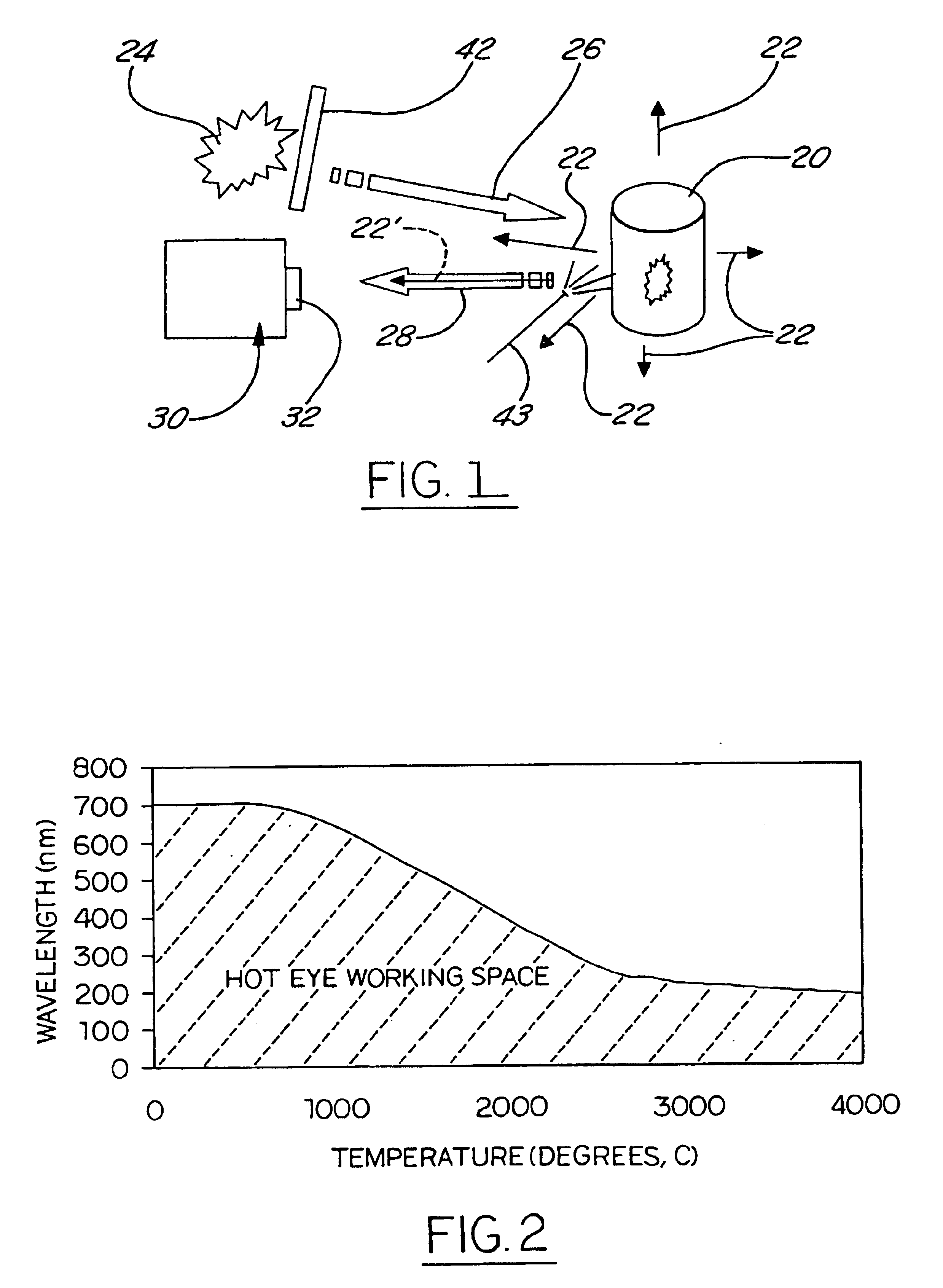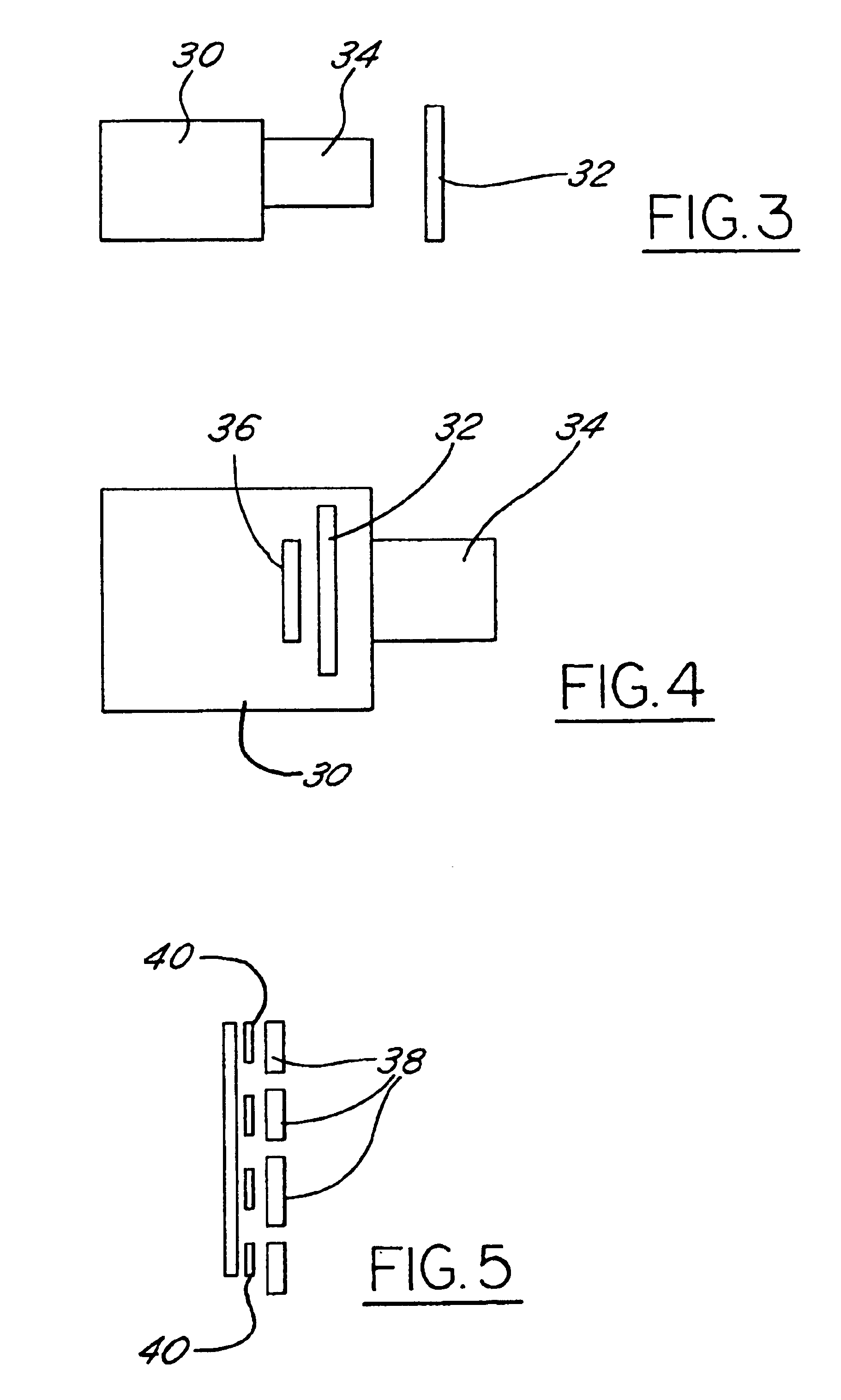Optical observation device and method for observing articles at elevated temperatures
a technology of optical observation and objects, applied in lighting and heating apparatus, television systems, instruments, etc., can solve the problems of limiting the ability of workers to physically interact with other objects, physical injury to workers, and limiting their mobility
- Summary
- Abstract
- Description
- Claims
- Application Information
AI Technical Summary
Benefits of technology
Problems solved by technology
Method used
Image
Examples
example
[0078]An example of the present invention in one embodiment is as follows:
[0079]1. The external illumination source is a halite lamp. The halite radiation consists of three principal wavelengths, 435 nm, 550 nm, and 575 nm. The radiation at 435 nm is the most useful wavelength in this design because it is the farthest one away from the self-emitted radiation of a hot object. The hot object must be at a temperature of 1800° C. or hotter for its self-emitted radiation to cover 435 nm, assuming the hot object is close to a black body.
[0080]2. The external radiation is projected onto the hot object and interacts with the surface of the hot object. The reflected radiation from the metal halite lamp (with all three distinct wavelengths), the self-emitted radiation from the hot object, and any other radiation present are all blended together.
[0081]3. The blended radiation is then passed through an interference filter, which has a working wavelength at 435 nm. That is, only the radiation at...
PUM
| Property | Measurement | Unit |
|---|---|---|
| temperature | aaaaa | aaaaa |
| temperature | aaaaa | aaaaa |
| temperatures | aaaaa | aaaaa |
Abstract
Description
Claims
Application Information
 Login to View More
Login to View More - R&D
- Intellectual Property
- Life Sciences
- Materials
- Tech Scout
- Unparalleled Data Quality
- Higher Quality Content
- 60% Fewer Hallucinations
Browse by: Latest US Patents, China's latest patents, Technical Efficacy Thesaurus, Application Domain, Technology Topic, Popular Technical Reports.
© 2025 PatSnap. All rights reserved.Legal|Privacy policy|Modern Slavery Act Transparency Statement|Sitemap|About US| Contact US: help@patsnap.com



